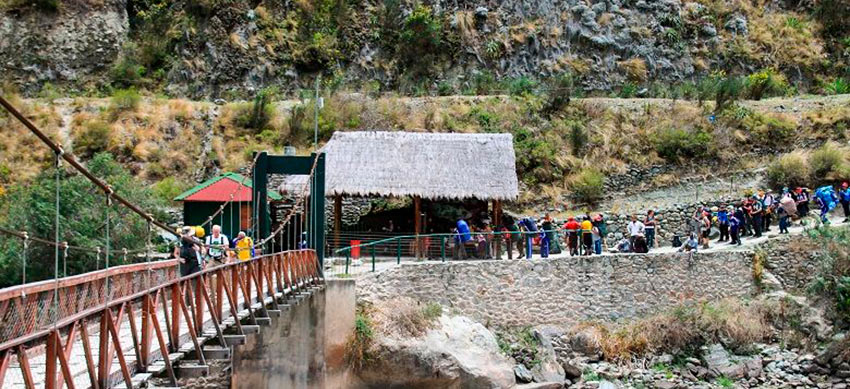
The Inca Trail is a hiking route with a lot of history. Today the Peruvian authorities protect these trails through rules and vigilance along the entire road. There are surveillance points such as at the entry points, in the different camps and in Machu Picchu. Learn more about security and surveillance on this historic walk.
The Inca Trail is considered the best hiking route in Peru. It lasts 4 days and 3 nights. It crosses 38 kilometers to reach Machu Picchu. The roads were part of the road network of the Incas, the famous qhapac ñan. The Peruvian authorities ordered the surveillance of each section of these historic roads. To get a tour you must request it online 6 or 7 months in advance. Otherwise you will not get availability as it is the most requested route in Cusco.
Is there surveillance on the Inca Trail?
- On the Inca Trail there is constant vigilance. Security is in charge of the park rangers who are in charge of the surveillance of the entire route of the Inca Trail. The reason is that the Inca roads, also called qhapac ñan, are recognized as Cultural Heritage of Humanity by Unesco. Consequently, they must be preserved for the future.
- The main function of the Inca Trail is to watch over the natural heritage (flora, fauna and geology). They are in charge of preventing any incident that threatens the integrity of walkers and historic roads.
Surveillance at points of entry
According to the regulation of tourist use of the Inca road network, the following places are established as points of entry:
- Km 82 (Ollantaytambo – Aguas Calientes train route).
- Km 88 (Ollantaytambo – Aguas Calientes train route).
- Km 104 (Ollantaytambo – Aguas Calientes train route).
- The entrance through these authorized places will be made only between 5.30 in the morning until 2 in the afternoon. You cannot do any kind of walk from 6 in the afternoon until 5:30 in the morning.
Camp safety
- Along the Inca Trail there are different camps where you spend the night. These are: Huayllabamba, Pacaymayo, Wiñayhuayna or Puyupatamarca.
- At the time of entering each camp it is mandatory that the walkers identify themselves with their passport or identity document with which they made the purchase of the tour.
- There is a lot of surveillance in and around the camps. Tourists are prevented from taking night walks.
Surveillance in Machu Picchu
- The final destination of the Inca Trail is the citadel of Machu Picchu. You get there after 39 kilometers of walking, through the Intipunku (the Puerta del Sol).
- In the Intipunku there is surveillance. Tourists must take the panoramic photos of Machu Picchu that they require. Then they must continue with the route to the archaeological site. The park rangers are in charge of enforcing the rules.
- The tour of the archaeological site of Machu Picchu takes approximately 2 hours. Throughout the Inca city there are park rangers.
- The objective of the surveillance in Machu Picchu is to protect the constructions of the Inca city. Also ensure the well-being of tourists during their tour.
More information about surveillance on the Inca Trail
- The park rangers who guard the Inca Trail and Machu Picchu are workers of the Sernanp (National Service of Natural Areas Protected by the State).
- The park rangers are authorized to intervene in the event of any mishap that threatens the order and safety of the users of the Inca Trail to Machu Picchu. They are also authorized to search travel equipment and can confiscate any unauthorized objects.
- In case of disobedience on the part of walkers (tourists, tour guides, porters, cooks); the park rangers are in the power to draw up a record of infractions. They can also file a complaint with the delegation of the National Police of Peru.
By Inca Trail Machu Picchu - Last updated, 16-02-2022
Interested in the Inca Trail? Know more about Information Inca Trail!
- How to choose my hiking shoes and visit Machu Picchu?
- The Vilcanota River, vital for the Inca Trail and the Sacred Valley
- Inca Trail to Machu Picchu What should I expect from a travel agency?
- Inca Trail What equipment is needed to cover this route?
- Are trekking sticks really necessary for the Inca Trail?
- Short Inca Trail – What archaeological sites are visited?
